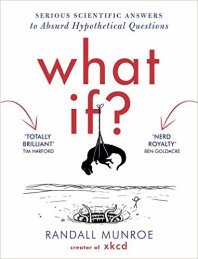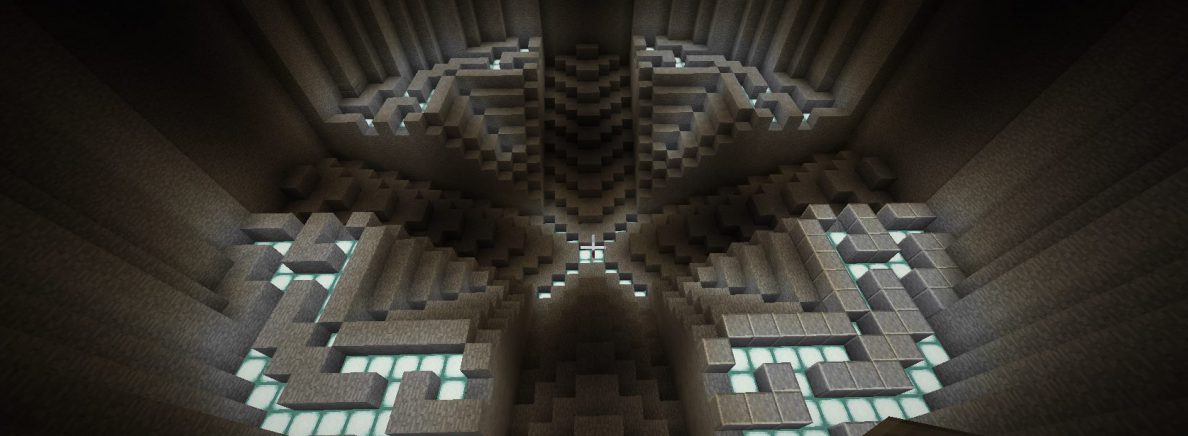
I had to do 4 of these tradebook reviews for class, and I wanted one of them to be something that could be taught in two different content-area classrooms at once. The first thing that came to my mind was some kind of historical fiction (social-studies/language arts) but then I noticed “What If: Serious Scientific answers to Absurd Hypothetical Questions” sitting on my bookshelf (science/language arts.)
“What If” is written by Randall Munroe, the guy who does XKCD, and his book is very much in the same spirit as his webcomics. I love XKCD. It’s sweet, sad, hilarious, philosophical, and educational. I just had to figure out how to work some of that magic into the classroom. So, here’s the review below the jump. Again, it’s in template form.
Tradebook title: “What If? Serious Scientific Answers to Absurd Hypothetical Questions”
Author: Randall Munroe
Would be used in course: Language arts/English
Grade: 9th
Estimated reading level: intermediate
Give a brief overview of the proposed tradebook:
For the assignment, I was looking for a non-fiction book, preferably something with more than just text that would be easy for an average 9th grader to read without needing a lot of scaffolding/front-loading. I found a book by Randall Munroe, who is most famous for his webcomic, XKCD. Munroe’s background is in engineering; he actually worked for NASA before becoming a cartoonist/writer.
“What If?” is a science book, crossed with a webcomic. Like the title says, Munroe takes crazy questions from readers, like “What would happen if you made a periodic table out of cube shaped bricks where each brick was made from the corresponding element?” and answers as seriously and accurately as possible. It’s funny, it’s easy to read, it contains a wealth of charts, and also stick-figure illustrations and comics to explain the concepts.
Cite relationship of this text to course curriculum:
There is an obvious opportunity to collaborate with a science teacher on teaching from this book. The branch of science most heavily represented in the questions is physics, which is part of the reason I believe this book goes best with 9th grade. However, it’s also a useful text for mastering informational text standards. It lends itself beautifully to writing and research projects of various kinds.
Cite relationship to common core standards:
CCSS.ELA-LITERACY.RI.9-10.3
Analyze how the author unfolds an analysis or series of ideas or events, including the order in which the points are made, how they are introduced and developed, and the connections that are drawn between them.
Many of the questions answered in “What If?” Are explained as a story, or sequentially, building on a series of answers or revelations. Students could be asked to evaluate the structure of the answers, or to analyze the sequence of events.
CCSS.ELA-LITERACY.RI.9-10.4
Determine the meaning of words and phrases as they are used in a text, including figurative, connotative, and technical meanings; analyze the cumulative impact of specific word choices on meaning and tone (e.g., how the language of a court opinion differs from that of a newspaper).
Given that “What If?” as a text is written to both inform (science) and entertain (humor) there is an opportunity to analyze tone and choice of language (how does the author’s choice of language accomplish both his goals? Are the two goals at odds with each other, or do they compliment each other?)
CCSS.ELA-LITERACY.W.9-10.2
Write informative/explanatory texts to examine and convey complex ideas, concepts, and information clearly and accurately through the effective selection, organization, and analysis of content.
CCSS.ELA-LITERACY.W.9-10.3
Write narratives to develop real or imagined experiences or events using effective technique, well-chosen details, and well-structured event sequences.
CCSS.ELA-LITERACY.W.9-10.3.A
Engage and orient the reader by setting out a problem, situation, or observation, establishing one or multiple point(s) of view, and introducing a narrator and/or characters; create a smooth progression of experiences or events.
There are a lot of writing projects that could be attached to “What If?” One idea is to imitate the style and structure of a “What If” chapter to answer a science question. Ideally, students would be able to conduct an experiment in science class as the basis for this project, however, they could also base their answer on research as well.
Overall strengths/weaknesses of this tradebook?
The common core curriculum maps focus heavily on narrative non-fiction like biographies and memoirs. Teachers should be careful not to spend too much time on non-narrative informational texts. However, the book’s great advantage is the cross-content utility it offers. The science it offers is really fairly robust, while remaining highly accessible.
Does this material consider the emotional, physical and intellectual development of the student?
The humor, the infographic nature of the text, and the alternative approach to science make this book very age-appropriate.
Does this material recognize the contribution of both genders?
One of the cool things about XKCD, and by extension, the book, is that NASA engineers, computer hackers and mad scientists are every bit as likely to be a woman as a man.
Does this text contain any material which may potentially be incompatible with community or parent values?
There are no drugs, sex, or even violence in the book (there are explosions though.) There are two questions answered in the book which some parents might find uncomfortable or objectionable for other reasons
“Is it possible to build a jetpack using downward firing machine guns?” (page 68.) Obviously, this is treated as a physics problem, but some might find it uncomfortable nonetheless.
“I read about some researchers who were trying to produce sperm from bone marrow stem cells. If a woman were to have sperm cells made from her own stem cells and impregnate herself, what would be her relationship to her daughter.” (page 158.) What follows is a straightforward discussion of genetics. Certainly, however, some parents might feel that this chapter is not completely age-appropriate, or possibly just upsetting.

Daniel, thank you for sharing this with me. I don’t blog but I enjoy reading them. 🙂
LikeLike
No prob. See you this summer.
LikeLike